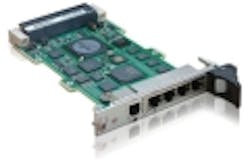High-speed backplane connector system for military and telecommunications applications introduced by Molex
LISLE, Ill., 10 June 2010. Molex Inc. in Lisle, Ill, is introducing the VHDM H-series backplane connector system for military applications, medical imaging, data networking storage and servers, telecommunications, hubs, switches, routers, cellular infrastructure, test and measurement equipment, and other applications that require high interconnect density and high-speed signal integrity.
The VHDM H-series enables an installed base to perform at 6.25 gigabits per second, and improves printed circuit board routing and back drilling, while minimizing impedance discontinuities and reducing peak cross-talk by as much as 50 percent.
This version allows for faster data rates using the same footprint as the standard line, making the VHDM H-series an solution. VHDM stands for Very High Density Metric H-series.
The signal portion of the VHDM H-series connector system consists of modules in increments of 10 columns by 25 columns in either six or eight rows. The daughter card connector consists of a metal stiffener that combines signal wafers, power modules and guidance modules to make one continuous connector that can be ordered with one custom part number.
The maximum length of one stiffener is 300mm (~12”). The power contacts can handle 10.0 A of current per blade, efficiently delivering as much as 120.0 A per 25.00-millimeter (0.984”) of board edge with several mating levels for hot pluggable applications. Metal guide pins and key slots provide excellent guidance for large PCBs and eliminate the possibility of plugging a daughter card into the wrong slot.
The VHDM H-series is scalable, with an identical mating interface and envelope to the VHDM L-Series (1 gigabits per second), VHDM (3.125 gigabits per second) and VHDM-HSD (5 gigabits per second).
For more information contact Molex online at www.molex.com.
